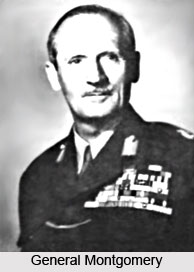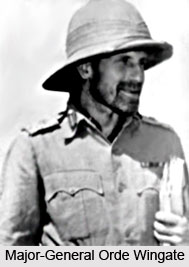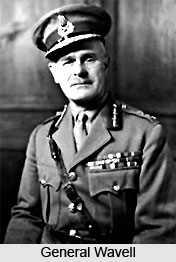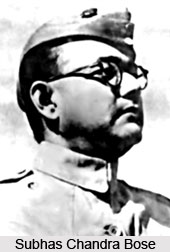 Indian Army in the Second World War made several significant contributions to the British forces. Indian Army during the British Raj was a separate wing in contrast to the present Indian Army. During the English era, the Indian armed forces were constituted differently, following British norms and regulations. It was a colossal organisation, basically formed by absorbing the armies of three Presidency towns of Bombay, Madras and Bengal. Indian Army functioned both as security providers in the country and abroad, especially in the two World Wars. Between the periods of 1903 to 1947, the Army of India comprised two separate units - the Indian Army and the British Army in India. The former consisted of Indian Army regiments originating in India, while the latter were British Army regiments originating in the United Kingdom. They were sent to India on a term of enlistment. The armed forces unit were established after the disintegration of the Indian kingdoms, after the now-legendary Sepoy Mutiny, also known as the great revolt of 1857. During the Second World War a few Indian Army experts in 1940, in mountain warfare provided to the British Army in Norway. The industrial, military and financial support of India formed a critical component of British campaign during the Second World War.
Indian Army in the Second World War made several significant contributions to the British forces. Indian Army during the British Raj was a separate wing in contrast to the present Indian Army. During the English era, the Indian armed forces were constituted differently, following British norms and regulations. It was a colossal organisation, basically formed by absorbing the armies of three Presidency towns of Bombay, Madras and Bengal. Indian Army functioned both as security providers in the country and abroad, especially in the two World Wars. Between the periods of 1903 to 1947, the Army of India comprised two separate units - the Indian Army and the British Army in India. The former consisted of Indian Army regiments originating in India, while the latter were British Army regiments originating in the United Kingdom. They were sent to India on a term of enlistment. The armed forces unit were established after the disintegration of the Indian kingdoms, after the now-legendary Sepoy Mutiny, also known as the great revolt of 1857. During the Second World War a few Indian Army experts in 1940, in mountain warfare provided to the British Army in Norway. The industrial, military and financial support of India formed a critical component of British campaign during the Second World War.
Indian Army during Middle East Campaign
The Middle East campaign was one more sphere, where the Indian Army was of tremendous help in Second World War. Within the period of 4th February to 19th May 1941, the 4th and 5th Indian Divisions and assorted British and Free French units cleared Eritrea and Abyssinia of the Italian forces. The battle through February 4 and March 25 for Kern won by the British provided the key, leading to the capture of the Duke of Aosta, Italian Commander-in-Chief and 220,000 Italian prisoners.
In April, the 8th Indian Division landed at Basra and passed on to Baghdad to secure Iraq for British interests in the face of Rashid Ali, a pro-German Iraqi leader. On 22nd June, the 5th Brigade of the 4th Indian Division, part of the 1st Cavalry Division and six Free French battalions succeeded in capturing Damascus from the Vichy French. On 2th5 August, the 8th and 10th Indian Divisions invaded southern Persia and successfully secured vital oil supplies following the German invasion of the Soviet Union and their subsequent threat to the oil fields.
 Indian Army during North African Campaign
Indian Army during North African Campaign
The North African campaign was also wrapped up dauntingly by the Indian Army units in the Second World War. Within the period of 7th December 1940 to 7th February 1941, under the command of General Wavell, the 4th Indian Division and the 7th Armoured Division with supplementary units, totalling 31,000 men, destroyed ten Italian Divisions as they moved through North Africa to Benghazi. On 31st March, Field-Marshal Erwin Rommel (1891-1944) launched his campaign against the British, driving across North Africa toward Egypt. The 3rd Indian Motor Brigade fought a key delaying action on April 6 at Meikill, allowing the 9th Australian Division to slip into Tobruk. On 15th June, the British initiated Operation Battle-ax with the 4th Infantry Division and the 7th Armoured Division to relieve Tobruk. The operation failed entirely and suffered the lost of ninety-six tanks. On the days of 28th and 29th November, the British Eighth Army began Operation Crusader for the relief of Tobruk. British forces got to Tobruk at great cost, an operation in which the 4th Indian Division played a central role.
Involvement of Indian Army during Second World War
In the months of August to November 1942, General Montgomery took Eighth Army across North Africa against the Axis forces. Gurkha units of the 4th Indian Division fought well at Wadi Akarit, which was the key to Rommel`s defeat in North Africa. The Southeast Asia and Burma campaigns were yet another area in the ongoing Second World War, where the Indian Army exhibited their valour, integrating with the British recruits In December 1941, in Hong Kong, the 5th and 7th Rajputs, 2nd and 14th Punjabis and several supporting units resisted for eighteen days, before surrendering to the Japanese.
On 8th of December, the Japanese attacked down the length of the Malaya Peninsula. Various British, Australian and Indian forces fought in defence of Singapore. On February 14th, 1942 Singapore fell to the Japanese with the surrender of 70,000 British, Australian and Indian troops. On the very day, Japanese troops invaded Burma from Siam, capturing key British airfields in Tenasserim. Likewise, Moulmeinand Martaban fell. On March 7th, the British abandoned Rangoon (Yangon) to the Japanese. In July 1942, the last of the British and Indian troops escaped out of northern Burma to Assam. The subsequent Japanese invasion of India was forestalled by long lines of communication and the monsoon.
 Within the months of October 1942 to March 1943, a British thrust in the Arakan in which the 14th Indian Division participated, totally failed. In February 1943, Major-General Orde Wingate (1903-1944) assigned the 77th Indian Infantry Brigade and British units to conduct Chindit, or guerrilla operations behind Japanese lines in the heart of Burma. Although they caused some material damage at a high personnel cost, yet they demonstrated that the British could meet and fight the Japanese successfully.
Within the months of October 1942 to March 1943, a British thrust in the Arakan in which the 14th Indian Division participated, totally failed. In February 1943, Major-General Orde Wingate (1903-1944) assigned the 77th Indian Infantry Brigade and British units to conduct Chindit, or guerrilla operations behind Japanese lines in the heart of Burma. Although they caused some material damage at a high personnel cost, yet they demonstrated that the British could meet and fight the Japanese successfully.
Within the extensive period of November 1943 to March 1944, under the command of General William Slim (1891-1970), the Indian Army conducted a successful campaign in the Arakan with the 5th and 7th Indian Divisions and other allied units. Although not of great strategic value, the operation validated the tactics required to beat the Japanese. Within the days of 6th of March to 22nd of June 1944, Japanese forces launched an attack on the Imphal plain against the British at Kohima and Imphal. Slim pulled the 17th and 20th Indian Divisions back to the Imphal Plain, where they joined the 23rd Indian Division in reserve. Furthermore, he had flown in the 2nd, 5th and 7th Indian Divisions. The siege of Imphal was ultimately totally lifted on June 22.
In the later days of July 1944 to August 1945, Slim`s 14th Army recaptured Rangoon and cleared Burma of the Japanese. The Italy campaign after the perilous previous endeavours in the Second World War, proved Indian Army`s tactics to stretch their limits till the end. Within the days of 9th September 1943 to May 1945, the 4th, 8th and 10th Indian Divisions fought in Italy, witnessing particular action. Activities had taken place at the crossing of the Sangro, at Cassino, the Liri Valley and in the Gothic lines and at the crossing of the Senio and the Po rivers.
In August 1944, Lord Wavell called a conference of all Provincial Governors to discuss plans for the post-war period. The ideas addressed were consultation of principal Indian party leaders, continued governance of India under the existing constitution, formation of Constituent Assembly to compose constitution for an independent India and to negotiate a treaty governing the transfer of power. Wavell proposed an executive of equal numbers of Hindus and Muslims.
On 25th June 1945, in Shimla, Lord Wavell convened a conference of key Indian political leaders. The crucial point of the conference regarded the formulation of the Executive Council. Mohammad Ali Jinnah rejected Wavell`s plan for five Muslim members to be seated on the Council with one being a non-Muslim League member. On this point the conference broke down on July 14. Further, on 17th of August, British Prime Minister Clement Atlee (1883-1967) reconstructed the India Committee of the Cabinet to include himself, Cripps, Petbick-Lawrence (1871-1961), Wedgwood Benn (1877-1960), Ellen C. Wilkinson (1891-1947) and Lord Listowel (1906-1997). At its first meeting, the Cabinet decided to bring Lord Wavell to London for consultations and to press for early elections to form a constitution-making body.
On 21st of August, with the end of the war with Japan, Lord Wavell called for elections of the Centre and Provincial assemblies in the forthcoming cold weather. On 9th September, following his return from London and three weeks of consultations, Lord Wavell announced that the provisions of the 1942 Cripps Mision remained as the Government`s offer to the Indians and that elections of provincial assemblies would be held in the winter of 1945-46. Both Congress and the Muslim League severely criticised to Wavell`s statement.
 Indian National Army
Indian National Army
In between November 1945 to February 1946, with the capture of thousands of Indian soldiers early in the war in Malaya, Subash Chandra Bose (1897-1945) influenced nearly 14,000 to join the Indian National Army. Bose urged men to fight on the side of the Japanese. Some INA (Indian National Army) units saw action in the 2nd Arakan Campaign and at Imphal. On 5th of November, trials of three INA soldiers deemed to have committed or abetted murder, began at the Red Fort in Delhi. Finally thirty-six Indians were brought to trial on charges of brutality to fellow countrymen. The trials created such a high level of Indian political contention, that the issue was not pursued. Moreover, Azad Hind, a government in exile was formed against British rule during this time.
The cold weather assembly elections attain this result in the times of 1945-1946. At the centre, Legislative Assembly Congress won fifty-seven seats; the All India Muslim League took thirty, Independents five, Akali Sikhs two and the Europeans eight. In the Provincial Assemblies, the Congress won seven provinces and the Muslim League two. Since the times of 1919, political reforms in the governance of India had gone hand-in-hand with the Indianisation of the services. By 1946, British held 429 of the 939 positions in the Indian Civil Service. In addition, twice as many of the British incumbents were slated to retire as compared to the Indians. India emerged as one of the largest industrial powers after the Second World War.






